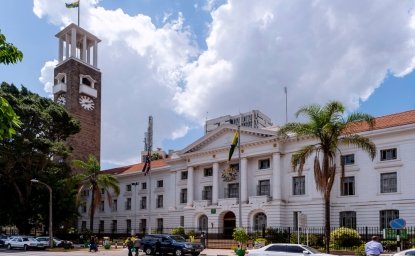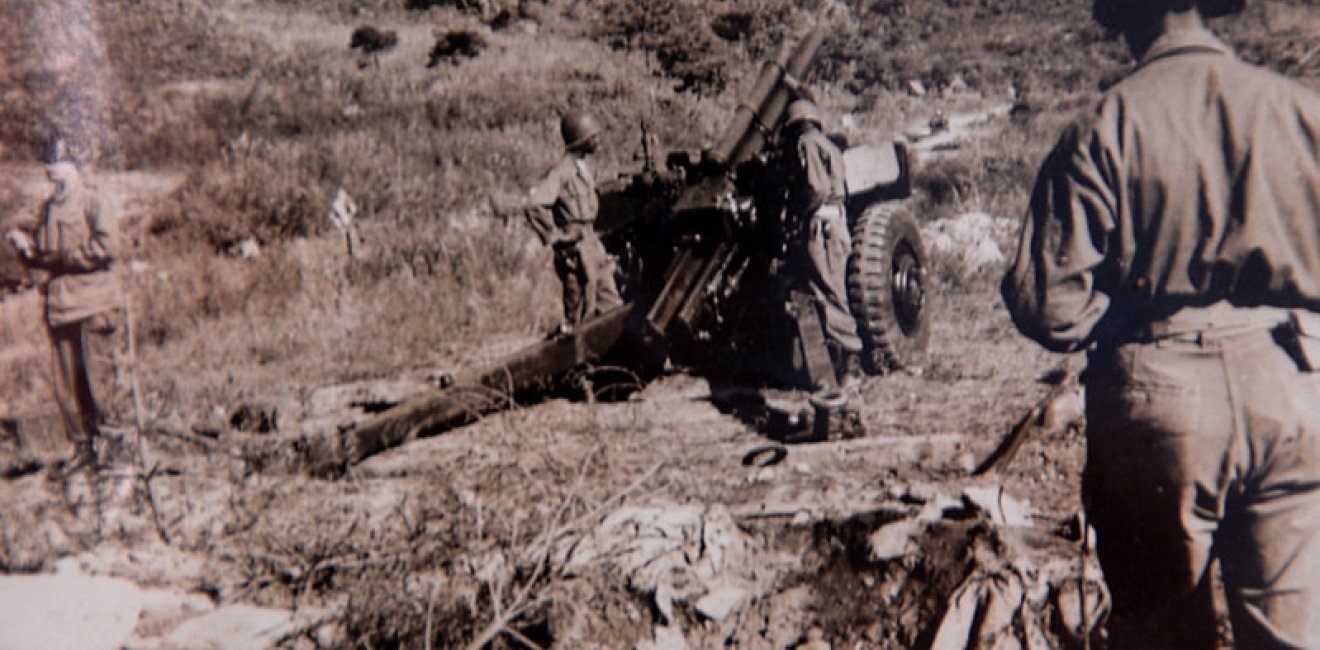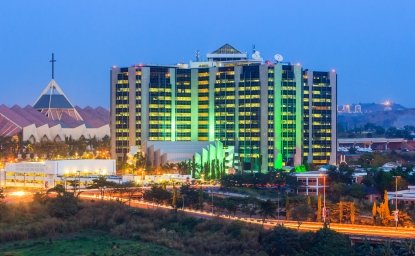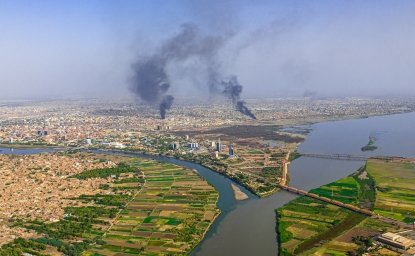
A blog of the Africa Program
According to South Korea's Blue House Spokesman, Ethiopian Prime Minister Abiy Ahmed called South Korean President Moon Jae-In on March 30. The two leaders exchanged their concerns about COVID-19. During the phone call, Abiy told Moon that COVID-19 was the biggest upcoming issue in Africa. He expressed concern about the economic damage Ethiopia is suffering due to COVID-19. At the same time, he commended "brother-like Moon's response to COVID-19" and said the African continent needs Moon's experience and global leadership to fight the virus. Moon, in return, thanked Abiy for providing a chartered flight for South Korean troops to return home from their mission in South Sudan. He also asked for Ethiopia to assist any South Koreans in Africa who seek to fly back home during the pandemic crisis.
The March 30 Abiy-Moon phone call illustrated the close relationship Ethiopia and South Korea have maintained under their leadership. Last August, Abiy was the first leader from the African continent to visit South Korea during the Moon administration. During Abiy's visit, Moon recalled Ethiopia's contribution to the Korean War, saying "Ethiopia is the only African nation to send ground troops to South Korea. The country's Kagnew troops made an important contribution to establishing peace and freedom on the Korean peninsula. South Korea will never forget Ethiopia's contribution." Moon called Ethiopia South Korea's "blood brother."
During this 2019 visit, the two nations signed five memorandums of understanding on: 1) a mutual waiver of visa requirements for holders of diplomatic passports; 2) the establishment of a joint ministerial commission; 3) cooperation relating to standardization, certification, conformity assessment, and technical regulation; 4) environmental cooperation; and 5) a loan agreement for building an Adama Science and Technology university project in Ethiopia.
The history between Ethiopia and South Korea goes back 69 years, to the early days of the Korean War. The war ravaged the Korean Peninsula from 1950 to 1953, killing nearly five million civilians and soldiers. The conflict was the Cold War's first international proxy war. The United Nations, backed mainly by the United States, supported South Korea, while China and the Soviet Union supported North Korea. The United Nations Multinational Force consisted of 16 nations, including the United States, the United Kingdom, Canada, France, and Belgium. Ethiopia was the only African nation to contribute ground troops to the UN force. In 1951, Ethiopian emperor Haile Selassie sent thousands of his imperial bodyguards, known as the Kagnew Battalion, to the UN force. During the course of the Korean War, three Kagnew battalions consisting of 3,520 soldiers served, suffering casualties of 121 killed and 536 wounded. The Ethiopian soldiers had the distinction of being the only UN troops to have no personnel captured alive by the Chinese or North Koreans.
For South Koreans, Ethiopia is gratefully viewed as a country that helped them in the Korean War. South Koreans especially hold a heroic view of Haile Selassie, Ethiopia's last emperor, for having his troops help defend their country during the war. In September 2017, 46 years after Haile Selassie was deposed, a major South Korean conservative news outlet published an article commemorating Ethiopia's last emperor. According to the article, Ethiopia had a shared historical experience with South Korea. In 1936, Ethiopia suffered an invasion by Italy. Selassie thus understood South Korea's burden as a weak nation and decided to help the country repel its invaders. He acted as a "freedom guardian," telling his troops to "to fight the invaders and return only after establishing order in the Korean Peninsula." He also told them "never to give up, and fight until the day of victory."
Similarly, an article in March 2020 by another South Korean news outlet also portrayed Selassie as a hero. The article reported that Selassie gave $100,000 in aid to South Korea, in addition to sending troops, when the war broke out. The article stated that, whereas the other 15 nations participating in the UN force conscripted their soldiers, all the Ethiopian soldiers reportedly volunteered because they too had suffered from a foreign invasion. They understood South Korea's sorrow and thought it was their duty to help a fellow weak nation.
Selassie gave a heartfelt, moving speech when he sent his troops to the Korean War in 1951. In the send-off ceremony, he said, "Our commitment to fighting aggression is informed by what happened to us in our recent history. Our decision to send help emanates from our genuine belief that an attack on someone's freedom is an attack on 'freedom-loving people' like us. Your mission is led by a genuine love for the freedom of peoples, so we trust that the Almighty will strengthen your muscles in fighting injustice. The God of Ethiopia and the spirit of your freedom-loving ancestors will follow you to victory and the successful accomplishment of your mission."
It is important, however, not to be blinded by this romantic portrayal of Selassie. The emperor did not send troops to the Korean War solely because he felt sorry for South Korea. He had another important incentive: allying with the United States.
Ethiopia had regained its independence in 1941, five years after Italian troops invaded the country. Haile Selassie, who was reinstated as the Emperor of Ethiopia upon Italy's expulsion, actively pursued a close relationship with the United States, an emerging global superpower. Selassie wanted Ethiopia to be independent of Britain and Italian influence by allying with a new power to guarantee its sovereignty. The ascendant U.S. was attractive for a number of reasons, including the fact that, unlike Britain and France, it had never colonized any country in Africa. Selassie thus actively looked to ally with the U.S., as he thought it would be strategically beneficial for Ethiopia and its foreign policy goals.
After WWII, Ethiopia's main foreign policy goal was to gain control of neighboring Eritrea, which had been an Italian colony since 1890. Contrary to Ethiopia's wishes, however, the U.S. initially devised a plan to divide Eritrea between Ethiopia and Sudan. But the U.S. abandoned its proposal to partition Eritrea when it realized Ethiopia's potential strategic importance to U.S. foreign policy.
In 1948, Selassie asked the United States to support Ethiopian control of Eritrea. In return, the emperor guaranteed the U.S. continual use of Radio Marina in Asmara, Eritrea. Use of the station was strategically important for the U.S., as its proximity to the equator "made periodic frequency shifts unnecessary." Selassie's proposal thus gave the U.S. an incentive to support Ethiopian control over Eritrea. Moreover, to gain additional positive interest from the U.S., Selassie also sent troops to the Korean War, becoming "the only non-NATO state in the Mediterranean-Middle East region to contribute troops."
Selassie actively touted Ethiopia as part of NATO's "southern tier," a "secondary line of defense against communism in the Middle East." This tactic, during the height of the Cold War, won the U.S government's confidence and trust. Two U.S.-Ethiopia bilateral agreements followed in 1953, for "Utilization of Defense Installations within the Empire of Ethiopia" and "Mutual Defense Assistance." These agreements gave the U.S. access to Eritrea's radio station, now renamed "Kagnew Station" to honor the name of the Ethiopian battalion that fought alongside U.S. and other UN forces in the Korean War. The agreements also granted the U.S. permission to fly over Ethiopian air space and access to its naval port facilities.
In return, Ethiopia received military assistance from the U.S., as well as economic assistance. From 1952 to 1959, the U.S provided $20 million to Ethiopia for agricultural assistance, part of $309 million in total U.S. aid from 1951-79, which made Ethiopia the largest U.S. aid recipient in Africa. The U.S. also funded education programs for Ethiopian universities, such as an agricultural college in Alemaya and Haile Selassie I University.
Selassie's various foreign policy motivations notwithstanding, there is no question that Ethiopia provided valuable support to South Korea during the Korean War. Today, 69 years later, it is time for South Korea to reciprocate by supporting Ethiopia in its war against COVID-19.
Matthew Minsoo Kim is an intern with the Korea Center at the Wilson Center and an undergraduate student in the Elliott School of International Affairs at George Washington University.
The Hyundai Motor-Korea Foundation Center for Korean History and Public Policy at the Wilson Center is a co-sponsor for this blog.
Author

Africa Program
The Africa Program works to address the most critical issues facing Africa and US-Africa relations, build mutually beneficial US-Africa relations, and enhance knowledge and understanding about Africa in the United States. The Program achieves its mission through in-depth research and analyses, public discussion, working groups, and briefings that bring together policymakers, practitioners, and subject matter experts to analyze and offer practical options for tackling key challenges in Africa and in US-Africa relations. Read more

Explore More in Africa Up Close
Browse Africa Up Close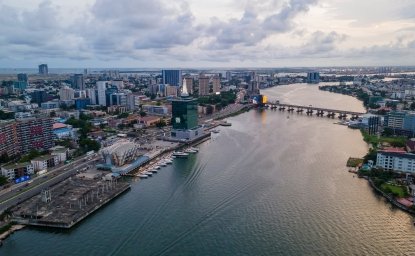
The Innovative Landscape of African Sovereign Wealth Funds
